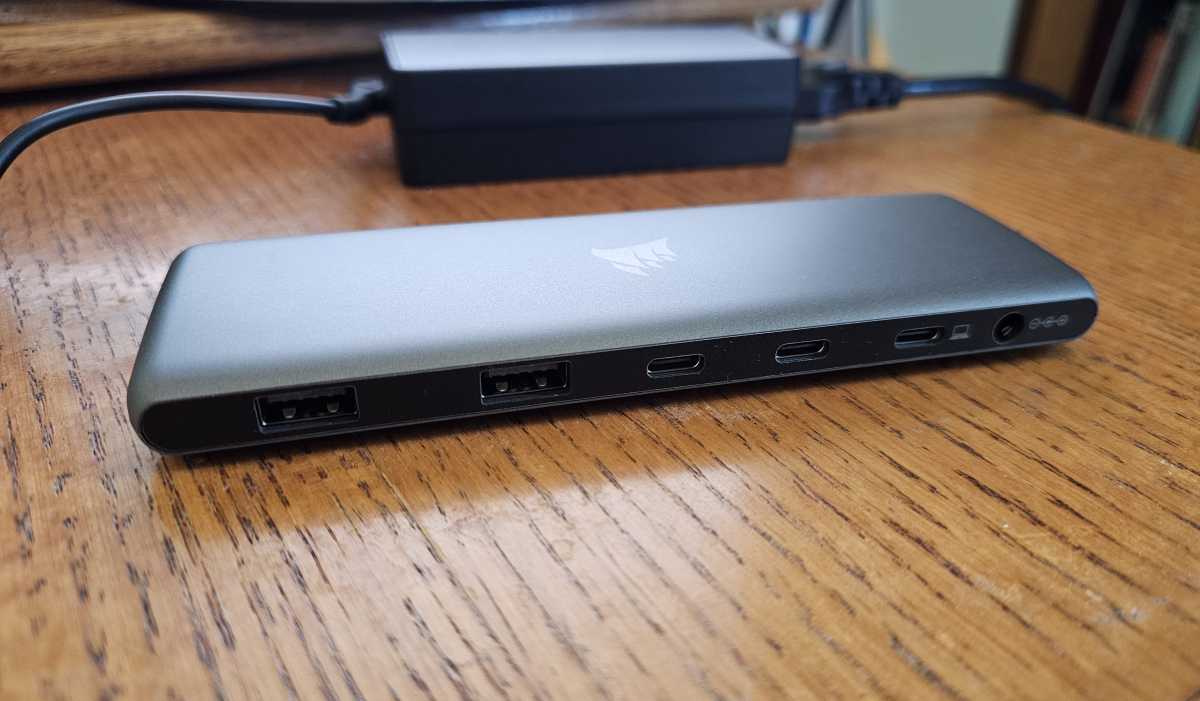Corsair USB100 7-Port USB-C Hub review: It doesn’t make sense
Expert’s Rating
Pros
- Powered dock, which can charge a phone
- 4 USB-A ports, 3 USB-C ports
Cons
- Can’t charge a laptop
- Other, better, cheaper options
Our Verdict
Corsair’s USB100 7-port USB-C/USB-A hub is only worth it to a very small group of people. For everyone else, our list of the best USB-C hubs offers much better options.
Best Prices Today: Corsair USB100 7-Port USB Type-C/USB Type-A Expansion Hub

$64.99
Most USB-C hubs or dongles make sense, even if you don’t end up buying them. Corsair’s USB100 7-port USB-C/USB-A hub does not—with the exception of a small, somewhat unusual use case.
Corsair’s USB100 7-port model focuses on a very select set of features, while leaving out others that you might expect. This USB-C dongle (formally known as the USB100 7-Port USB-C/USB-A Expansion Hub) retails for $70, and leans heavily on USB-A and USB-C expansion, while foregoing common ports like HDMI. But even on the USB side it falls short, as all of the ports transfer 5Gbps maximum—there is no 10Gbps option.
Further reading: See our roundup of the best USB-C hubs and dongles to learn about competing products.
Corsair’s USB100 is a powered hub, with a small 65W external charger included in the box. That in itself is unusual. While many competing dongles accept power, they usually do so via your laptop’s existing USB-C charger. And instead of an integrated USB-C cord, Corsair provides one that you plug in to the hub, which measures more than three feet. However, that USB-C cord doesn’t transfer any power at all to your laptop, which is probably not what you expected.
Instead, the power brick is used to power a pair of charging-capable ports: a USB-A port and a modern USB-C port, each of which is designed to supply power to external devices. Only the USB-C port can charge a phone. Neither port, however, delivers the power Corsair claims it should: The USB-C port is rated at 15W, and delivers 10.2W, while the USB-A port produced only 3.9W, not the expected 5W.

Mark Hachman / IDG
The USB100 measures 6.1 x 1.98 x 0.6 inches, all in a solid aluminum chassis. Here’s how the port alignment breaks down: On the front of the USB100, there are the two charging ports (USB-C, 5Gpbs; USB-A, 5Mbps) and another USB-A port, also at 5Gbps. On the back, there are two more 5Gbps USB-A ports, two 5Gbps USB-C ports, and the USB-C port to connect to your laptop. There are no Ethernet ports, no microSD card slots, and no headphone jack. Unfortunately, the USB-C ports are unable to output video.
It’s really not clear at whom Corsair is marketing its USB100 7-Port USB-C/USB-A Expansion Hub. Competing devices offer more of what you’ll need, and probably for less.
Putting it all together, the USB100 is really just a rather tame USB port expander, and makes the most sense if you have lost your smartphone charger. Otherwise, the Corsair USB100 proves to be a little disappointing, especially when there are far more capable USB-C hubs available for far less.
For all the latest Technology News Click Here
For the latest news and updates, follow us on Google News.

